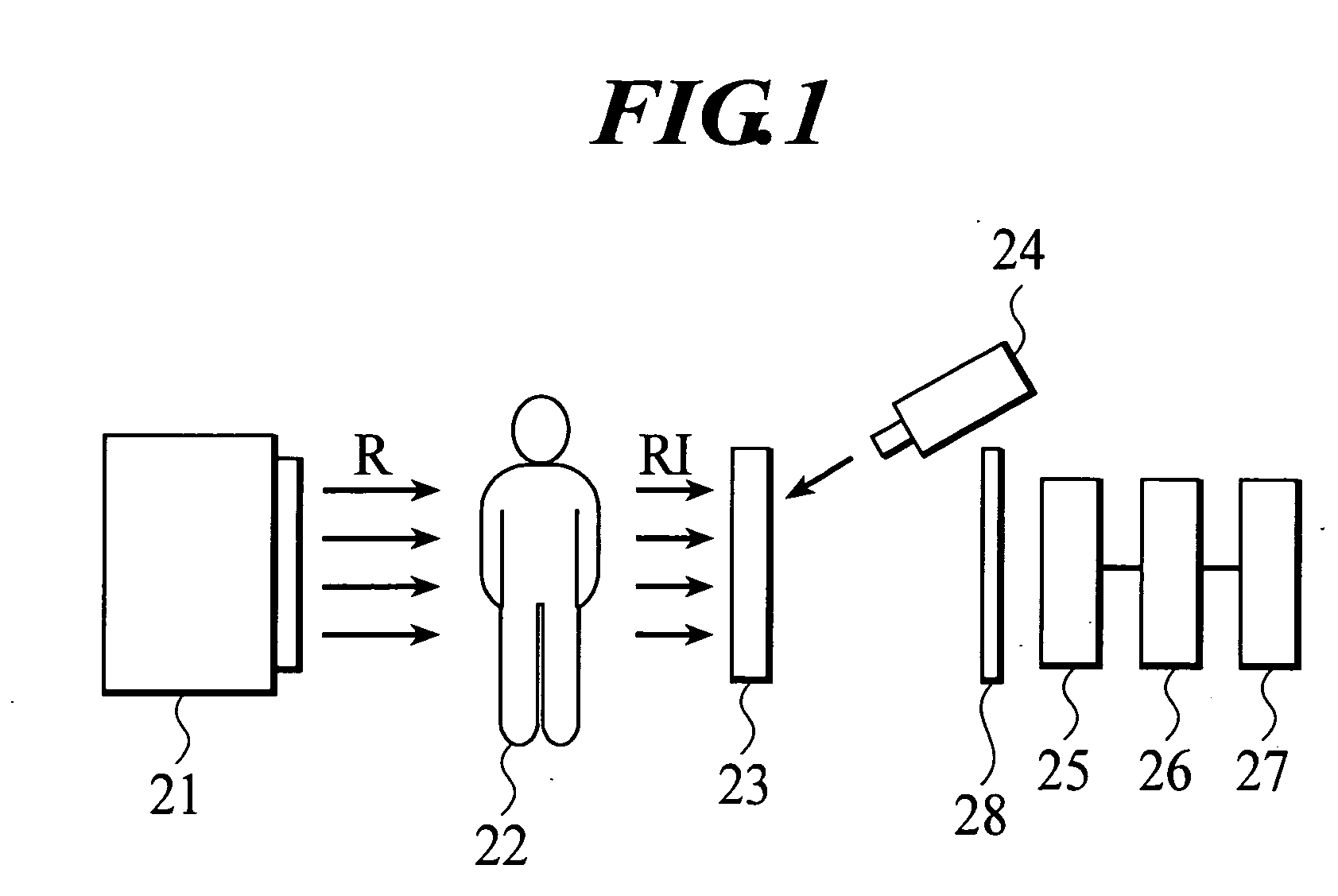Method for manufacturing radiographic image conversion panel and radiographic image conversion panel produced by the method
a technology of radiographic image and conversion panel, which is applied in the direction of conversion screen, instruments, nuclear engineering, etc., can solve the problems of inability to achieve high x-ray conversion efficiency by using and activating eu, uneven distribution of eu, and inability to achieve high x-ray conversion efficiency, etc., to achieve excellent sharpness, enhance the filling factor of phosphor, and reduce the effect of sharpness
- Summary
- Abstract
- Description
- Claims
- Application Information
AI Technical Summary
Benefits of technology
Problems solved by technology
Method used
Image
Examples
example 1
[0103]
[0104] (Manufacture of Photostimulable Phosphor)
[0105]
[0106] A photostimulable phosphor was obtained by filling CsBr:Eu basic materials prepared to become CsCO.sub.3 such that an Eu amount is 5 / 10,000 mol based on 1 mol of CsBr in a molybdenum boat and evaporating at a vacuum state of 1.0.times.10.sup.-2 Pa and at an evaporation speed of 10 .mu.m / min with a distance to a substrate of 28 cm (an average particle diameter of phosphor particles at the extremity of phosphor crystal was 4.9 .mu.m). A substrate temperature is controlled at 150.degree. C.
[0107] With respect to an average particle diameter of phosphor particles at the extremity of the phosphor crystal, particle diameters of 100 phosphor particles at the extremity of the phosphor crystal were obtained by an electron microscope, and an average value thereof was rendered the average particle diameter.
[0108] In order to form the phosphor layer, the above phosphor and a polyester solution (Vylon 63ss supplied from Toyobo ...
PUM
| Property | Measurement | Unit |
|---|---|---|
| evaporation speed | aaaaa | aaaaa |
| temperature | aaaaa | aaaaa |
| thickness | aaaaa | aaaaa |
Abstract
Description
Claims
Application Information
 Login to View More
Login to View More - R&D
- Intellectual Property
- Life Sciences
- Materials
- Tech Scout
- Unparalleled Data Quality
- Higher Quality Content
- 60% Fewer Hallucinations
Browse by: Latest US Patents, China's latest patents, Technical Efficacy Thesaurus, Application Domain, Technology Topic, Popular Technical Reports.
© 2025 PatSnap. All rights reserved.Legal|Privacy policy|Modern Slavery Act Transparency Statement|Sitemap|About US| Contact US: help@patsnap.com

